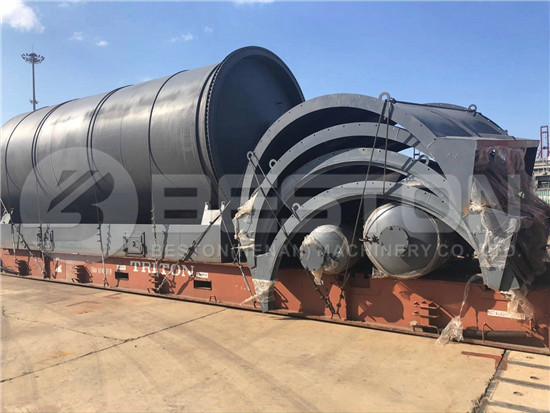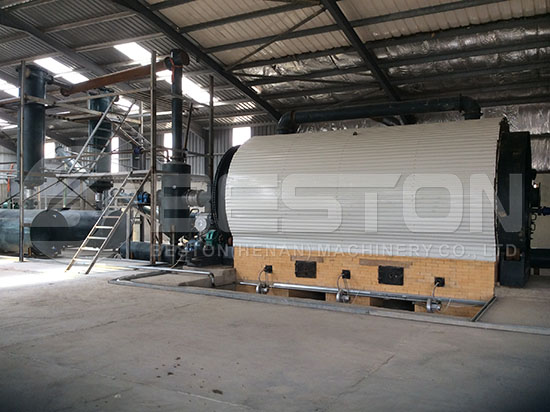A tyre pyrolysis plant is ideal for dealing with the mounting problem of black pollution. Using the latest engineering technology and world-class designs, such machinery is good for the environment and also allows investors to convert waste materials into useful end products, like carbon black and fuel oil. Many of the largest plant manufacturers have exported equipment to dozens of countries including Indonesia, Brazil, Jordan, UK, etc. It is profitable to invest in a tyre pyrolysis plant in South Africa. Visit any leading manufacturers’ website and you can read successful plant reports and case studies from previous clients.

Unique Design (Rotary V Fixed)
To make the most profits from waste tires, investors have to purchase the right type of machinery for their needs. There are two main types of pyrolysis plant design: rotary and fixed. With a rotary pyrolysis reactor, the furnace rotates 360 degrees to facilitate the even distribution of heat and increase pyrolysis efficiency. In addition, a rotary designed structure requires less floor space and is more affordable. Such a design is ideal for small-scale waste tyre recycling plant. With a batch working method, the daily capacity is obviously limited and a larger manual workforce is required for operation.
Plants with a fixed pyrolysis reactor can operate 24/7, so they are referred to as fully continuous pyrolysis plants. The working efficiency of fixed reactor designs is much better as the continuous heating speeds up the pyrolysis reactions leading to higher oil yields in shorter time periods. With a fully continuous tire pyrolysis plant, operators can enjoy much higher profits providing they are prepared to invest more money initially. The daily capacity of the BLL-20 model from Beston Machinery Co., Ltd. for example, is 20 to 24 tons.

End Products
The profitable end products from a waste tyre recycling plant include 45% fuel oil, 35% carbon black, 12% steel wire and 8% combustible gas. All of the products can be sold directly to various industries in their raw state to the global market space as they have many applications. The end products can also go through further processing to convert them into other valuable commodities. Carbon black, for instance, can be converted into charcoal blocks using briquetting equipment. It can also be reprocessed into higher-grade carbon using specialist grinding equipment. Most plant operators use the combustible gas produced during pyrolysis to refuel the reactor.
Growing Popularity
The responsible disposal of scrap tires is a large problem in many locations on the plant. While conventional incineration methods can produce lots of heat, they also produce lots of pollution. Sending waste tires to land fill results in a lot of toxins getting into the eco-systems. Furthermore, a typical tire takes over 80 years to naturally decompose. Consequently, it’s not hard to see how the popularity of eco-friendly tyre pyrolysis plant is going to continue to grow over the coming decades. The good news about the increased use of rubber recycling technology is that prices will start to become more competitive and affordable.